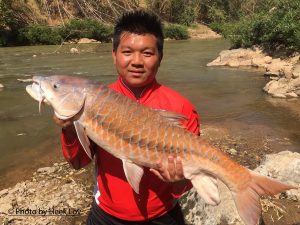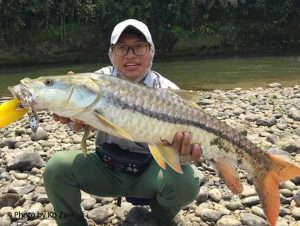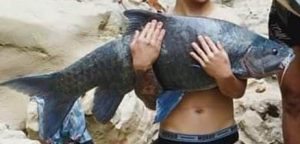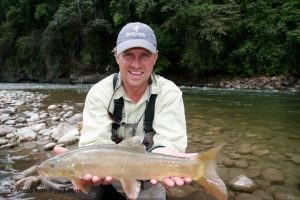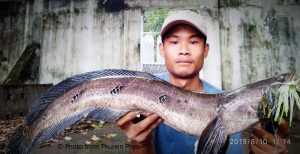Stracheyi Mahseer, Neolissochilus stracheyi
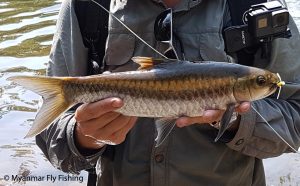
Hampala, Hampala macrolepidota
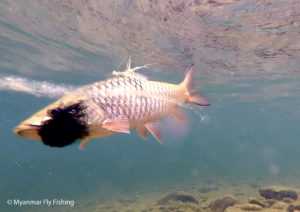
Burmese Trout, Raiamas guttatus
The Burmese trout is a species of ray-finned fish in the genus Raiamas.
It can be easily mistaken with its cousin the trout barb (Raiamas bola) from which it differs by the presence of a pair of short maxillary barbels. Raiamas bola on the other hand do not have barbels but presents a deep cleft in the mouth.
Their colour varies depending on the surrounding environment, but it is mostly silvery with very lightly coloured purple spots on the body. The top of the body is also slightly darker than the belly, from light brown to dirty green. (read more...)
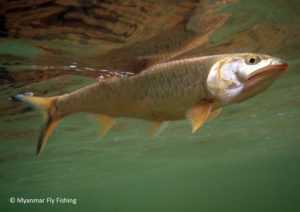
Tarpon (Indo-Pacific Tarpon), Megalops cyprinoides
In appearance, it is like the Atlantic tarpon, Megalops atlanticus: olive-green on top, and silver on the sides. The large mouth is turned upwards; the lower jaw contains an elongated, bony plate. The last ray of the dorsal fin is much longer than the others, reaching nearly to the tail. It is capable of filling its swim bladder with air and absorbing oxygen from it. Those living in fresh water tend to be smaller than the ones living in saltwater, growing just over 50 cm (20 in), while saltwater examples grow over 1 m (3.3 ft). They live upwards of 44 years and mature within two. (read more...)
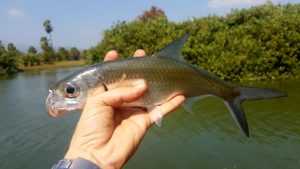
Stiped Snakehead, Channa striata
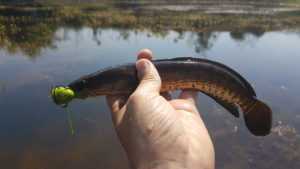
Semah mahseer, Neolissochilus sp.
![20160208_124844[1]](https://www.myanmarflyfishing.com/wp-content/uploads/2018/01/20160208_1248441-300x225.jpg)
Tilapia, Oreochromis niloticus
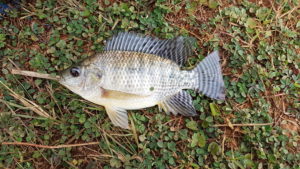
More to come!!!
There are more fresh water sport fish across Myanmar, including big, strong fighters. We are working to locate these species and understand how to best catch them on fly. Have a look below at what's possible...
